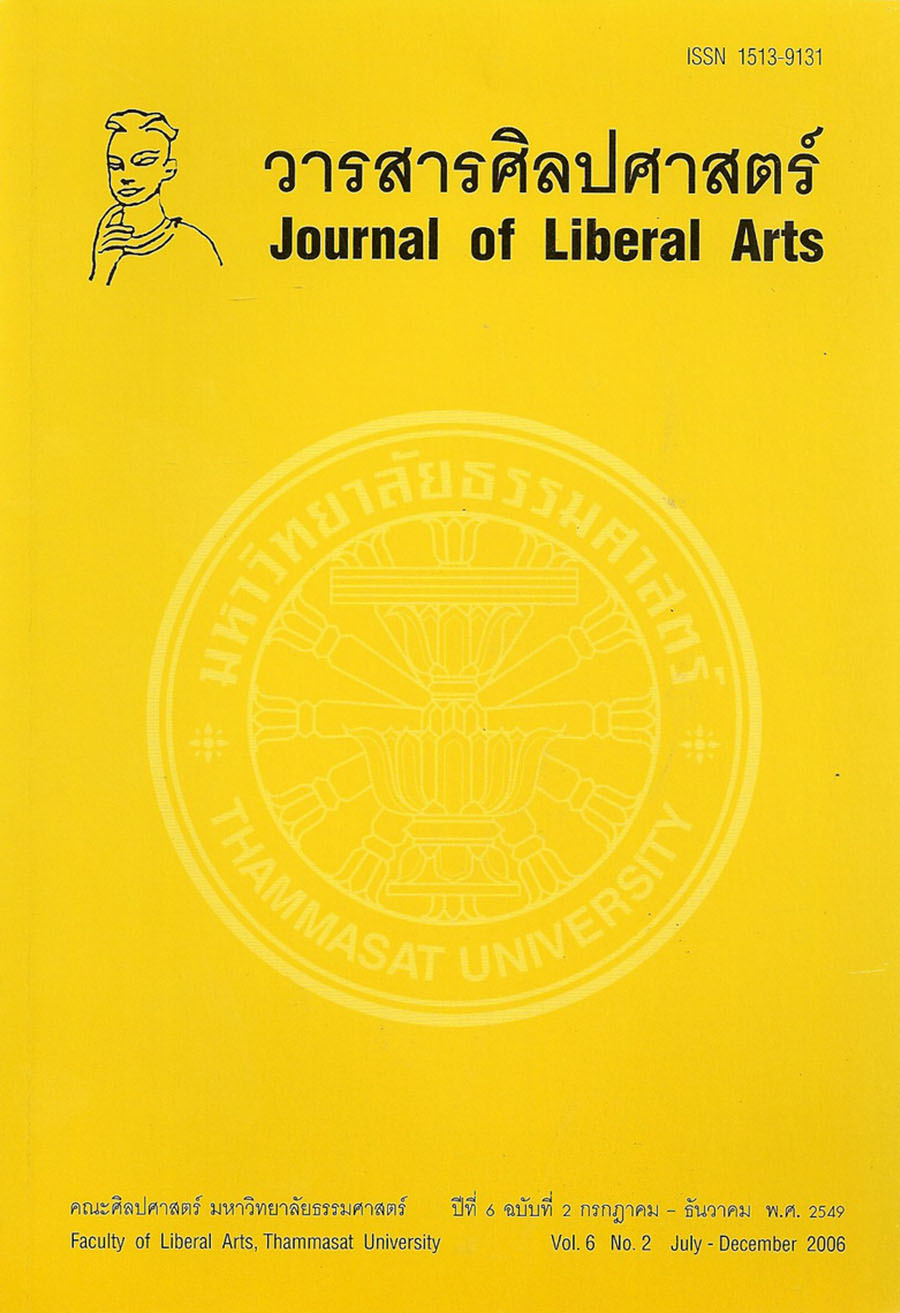The Seri Thai Movement: A Prosopographical Approach
Main Article Content
บทคัดย่อ
This study argues that the Seri (Free) Thai Movement during the Second World War was the first alliance of anti-military authoritarianism in Thai domestic politics. It was not as much an underground anti-Japanese occupation as normally understood. The movement was in fact a continuing dynamism of factional politics since the coup in 1932. This research is the prosopography of the 600 leading members of the four elite groups in Thai politics since 1932 until the post-war period: the royal family, the aristocracy, the new elite, and the Isan leaders. Consulting several kinds of sources, including parliamentary archives, cremation volumes and interviews, this study collects information on who they were, their family backgrounds and connections, careers, statuses, business, wealth, friendship circles, and so on. This study, then, analyses every group by various criteria relevant to each group to discern its sub-divisions, the relationship between social backgrounds and their politics, schools of thought, and eventually, factionalism. This factionalism, this study suggests, was the force behind Thai politics since 1932, in the pre-war period, through the entire war time including behind the Seri Thai Movement, and eventually was the factor for the rise and fall of the Seri Thai in domestic politics until 1947, when it was crushed by a military coup group that brought Thailand into the early Cold War.
งานวิจัยนี้เสนอมุมมองใหม่เกี่ยวกับขบวนการเสรีไทย ได้แก่ การพิจารณาขบวนการนี้ในบริบทการเมืองภายในของไทยเองในฐานะเป็นพันธมิตรแรกของการต่อต้านลัทธิเผด็จการทหารนิยมในประวัติศาสตร์การเมืองไทยสมัยใหม่ แทนการอธิบายผ่านขบวนการใต้ดินต่อต้านญี่ปุ่นในระหว่างสงครามโลกครั้งที่ 2 อย่างที่เคยนิยมกันตลอดมา ขบวนการนี้เป็นผลสะท้อนของความขัดแย้งและการต่อสู้ที่ต่อเนื่องค่อนข้างยาวนานภายในกลุ่มผู้นำนับตั้งแต่หลังการเปลี่ยนแปลงการปกครอง พ.ศ. 2475 เป็นต้นมา การวิจัยครั้งนี้ใช้วิธีการ Prosopography เป็นวิธีการในการศึกษาภูมิหลังของผู้นำไทยจำนวน 600 คน ประกอบด้วย กลุ่มเจ้านาย 100 คน กลุ่มขุนนางเก่า 128 คน กลุ่มคณะราษฎร 114 คน และที่เหลือคืกกลุ่มผู้นำท้องถิ่นที่ได้รับเลือกตั้งเป็นสมาชิกสภาผู้แทนราษฎรและผู้นำทหารอื่น ๆ เช่น คณะรัฐประหาร 2490 วิธีการ Prosopography เป็นเครื่องมือวิจัยทางสังคมศาสตร์และมนุษยศาสตร์ที่มีประสิทธิภาพในการศึกษาพฤติกรรมทางการเมืองของกลุ่มผู้นำ และได้รับความนิยมนำมาประยุกต์ใช้ในการวิจัยอย่างแพร่หลายในโลกวิชาการตะวันตกตั้งแต่ปลายทศวรรษ 1920 เป็นต้นมา ด้วยวิธีการนี้ผู้วิจัยเห็นว่าจะให้คำอธิบายอย่างมีน้ำหนักได้ว่าอะไรคือปัจจัยหลักของความขัดแย้งภายในกลุ่มผู้นำไทย ผลการศึกษาแสดงให้เห็นคำตอบทางการเมืองในระดับพื้นฐานว่า ผู้นำไทยจำนวน 600 คนนั้น มีความแตกต่างกันอย่างมาก ทั้งในด้านสถานภาพทางสังคม ฐานะทางเศรษฐกิจ และสำนักความคิดทั้งในเรื่องที่เกี่ยวกับประชาธิปไตยและแนวทางการพัฒนาประเทศ ความแตกต่างกันนี้เป็นผลโดยตรงจากตัวแปรภูมิหลังทางเศรษฐกิจ สังคม วัฒนธรรม และประสบการณ์ของแต่ละกลุ่ม และจะกลายเป็นปัจจัยที่สำคัญในการรวมตัวหรือเกาะกลุ่มของความขัดแย้งและการต่อสู้ทางการเมืองภายในกลุ่มผู้นำไทยภายหลัง พ.ศ. 2475 เรื่อยมา โดยเฉพาะในช่วงการก่อตั้งขบวนการเสรีไทย เมื่อกองทหารญี่ปุ่นบุกรุกเข้ามาในประเทศไทย และช่วงการสลายตัวไปของขบวนการนี้ หลังจากรัฐประหาร 2490


